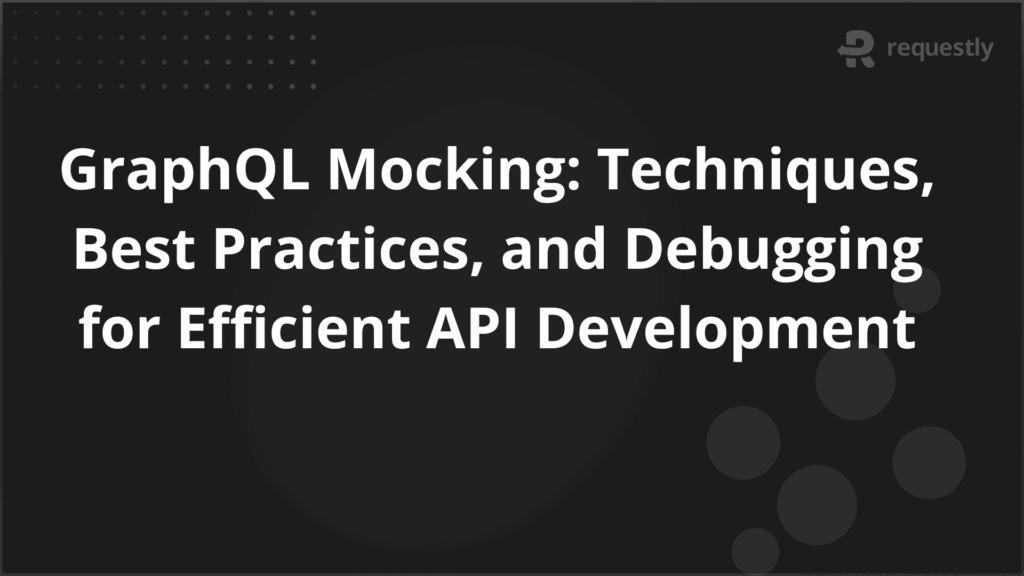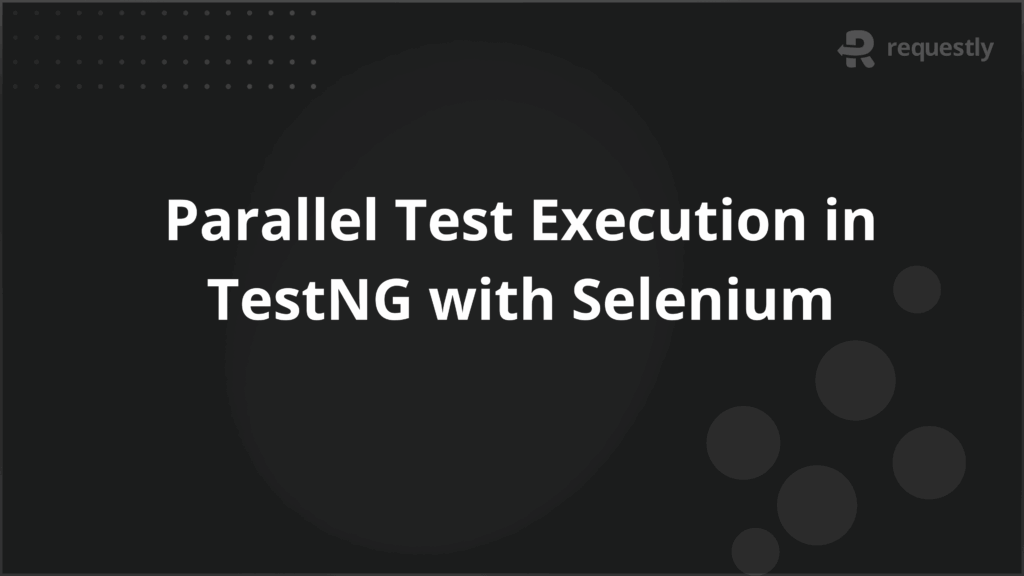GraphQL Mocking: Techniques, Best Practices, and Debugging for Efficient API Development


GraphQL mocking is a powerful technique that allows developers to create fake versions of their backend APIs for faster frontend development and reliable testing.
It leverages GraphQL’s strong type system to generate realistic mock data effortlessly, enabling teams to work in parallel without waiting for backend completion. This approach simplifies prototyping, improves test coverage, and speeds up the overall development process.
This article explores the concept of GraphQL mocking, detailing how developers can create mock APIs to accelerate frontend development and testing.
Understanding GraphQL Mocking
GraphQL mocking allows developers to simulate the behavior of a GraphQL API without needing a fully implemented backend. By generating fake but realistic data based on the GraphQL schema, mocking enables frontend teams to build and test UI components independently and in parallel with backend development. This approach speeds up the development cycle, reduces dependencies, and improves test coverage.
Mocking is particularly useful for handling various scenarios like loading states, error responses, and complex data structures, allowing developers to ensure their applications work correctly under different conditions.
Leveraging the strong typing of GraphQL, mocking tools generate consistent and predictable responses, making it easy to prototype and validate features before connecting to real data sources.
Basic Mocking Techniques
GraphQL mocking simulates API responses based on the schema, enabling faster development and testing. Key techniques include:
- Default Mocks: Automatically generate fake data for scalar types like strings, integers, and booleans according to the schema.
- Custom Mock Resolvers: Define specific data for fields or types to create consistent, context-aware responses.
- Lists and Nested Queries: Return arrays of mock objects to support pagination and nested data structures.
- Custom Scalars: Provide fixed or dynamic mock values for custom scalar types such as DateTime or enums.
- Consistent Data: Use seeded data generators to ensure repeatable mock responses for reliable tests.
These techniques create a fully functional mock GraphQL server that responds accurately to valid queries, removing backend dependencies during frontend development and testing.
Advanced Mocking Strategies
Advanced mocking in GraphQL involves sophisticated techniques to simulate more complex scenarios and ensure comprehensive testing coverage. Key strategies include:
- Customizing Mock Resolvers: Define detailed mock functions for specific types and fields to reflect complex business logic and relationships.
- Handling Lists and Pagination: Create mocks that generate arrays with variable lengths to simulate paginated data sets and nested structures.
- Mocking Federated and Stitched Schemas: Support complex GraphQL architectures by mocking multiple schemas combined through schema stitching or federation.
- Using Consistent and Predictable Data: Implement seeded random generators or static data sets to maintain consistency across test runs.
- Simulating Errors and Delays: Introduce error responses or artificial latency to test error handling and loading states in client applications.
- Preserving Existing Resolvers While Mocking: Combine real resolvers with mocks to selectively override parts of the API for targeted testing.
These advanced strategies enable developers to create realistic, flexible, and maintainable mock environments that closely mirror production behaviors, enhancing both development speed and test reliability.
Mocking in Different Environments
GraphQL mocking is valuable across various development and testing environments to accelerate workflows and improve reliability:
- Local Development: Mocking decouples frontend developers from backend readiness, enabling interface building and testing with simulated data on local machines.
- Automated Testing: Integrate mocks in unit and integration tests to simulate API responses, validate frontend logic, and ensure error handling without relying on live backends.
- Continuous Integration/Deployment (CI/CD): Use mocks in CI pipelines to run fast, isolated tests that catch regressions early, speeding up release cycles.
- Staging Environments: Combine mocks with real APIs to test frontend behaviors under specific scenarios like errors, latency, or data edge cases.
- Production Monitoring: Though rare, mocking can help simulate failover scenarios or monitor API behavior in dark launches without impacting real users.
Leveraging mocking tailored to each environment boosts team productivity, reduces dependencies, and ensures consistent, reliable application behavior throughout the development lifecycle.
Best Practices for Effective GraphQL Mocking
Implementing effective GraphQL mocking requires following key best practices to ensure mocks remain reliable, maintainable, and closely aligned with the actual API behavior.
- Mock Based on Schema: Always derive mocks directly from your GraphQL schema to ensure responses conform to expected types and structures.
- Use Custom Mocks for Specific Use Cases: Customize mock data for critical fields or types to better represent real-world scenarios and improve test accuracy.
- Maintain Sync With Schema Changes: Regularly update your mocks to reflect any schema modifications to avoid inconsistencies during development and testing.
- Simulate Different Response Scenarios: Include success, error, and edge cases to thoroughly test how the client handles various API responses.
- Keep Mocks Maintainable: Organize mock definitions clearly and avoid excessive complexity to allow easier updates and better collaboration.
- Combine Mocks with Real Resolvers: Where possible, mix real resolvers and mock data to test specific parts of your API without losing integration depth.
- Automate Mocking in CI/CD Pipelines: Integrate mocks into your automated testing to catch UI regressions and schema mismatches early.
- Monitor Mock Performance: Keep response times realistic and track any slowdown caused by mocks to maintain test suite efficiency.
Adhering to these practices ensures that GraphQL mocking effectively supports development workflows, improves test coverage, and maintains reliability as APIs evolve.
Enhance API Testing and Debugging with Requestly HTTP Interceptor
Requestly HTTP Interceptor is an advanced tool for intercepting, modifying, and mocking HTTP and GraphQL requests directly within your browser. It empowers developers to test and debug APIs faster and more efficiently without needing backend changes.
Key features include:
- Real-time API Response Modification: Override API responses on the fly to simulate different scenarios such as success, failure, or delayed responses.
- Header and Body Manipulation: Edit request and response headers and bodies to test authentication, caching, or data transformations.
- URL Redirection: Redirect API calls to different endpoints (e.g., staging or local servers) without changing application code.
- Request Blocking and Delay: Simulate network issues by blocking requests or adding artificial latency to test error handling and loading states.
- Script Injection: Inject custom JavaScript or CSS in web pages during testing for UI debugging or experimentation.
Requestly simplifies complex testing workflows, allowing frontend and backend teams to work independently, improving productivity and API quality during GraphQL development.
Conclusion
Requestly HTTP Interceptor significantly enhances API testing and debugging by providing developers with powerful capabilities to intercept, modify, and mock HTTP and GraphQL requests in real time.
This tool eliminates backend dependencies, accelerates development cycles, and allows simulation of diverse scenarios such as error responses, latency, and data variations, all without changing backend code.
By centralizing request and response management, Requestly streamlines debugging, improves collaboration between frontend and backend teams, and ensures higher-quality APIs. Integrating Requestly into the GraphQL development workflow results in more efficient testing, quicker releases, and robust applications ready to handle real-world complexities.

Contents
Subscribe for latest updates
Share this article
Related posts






















